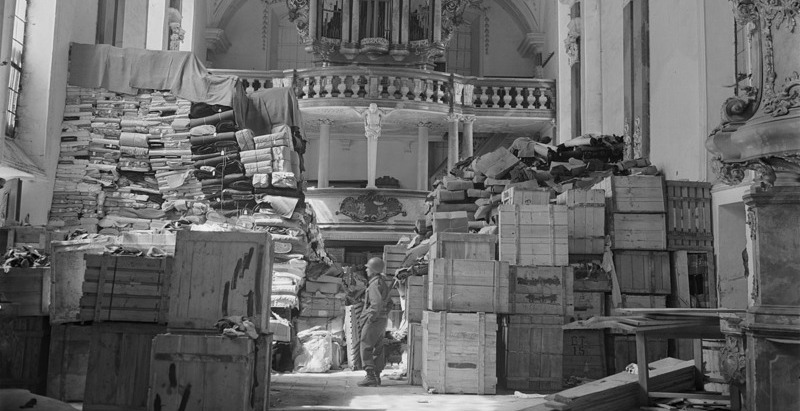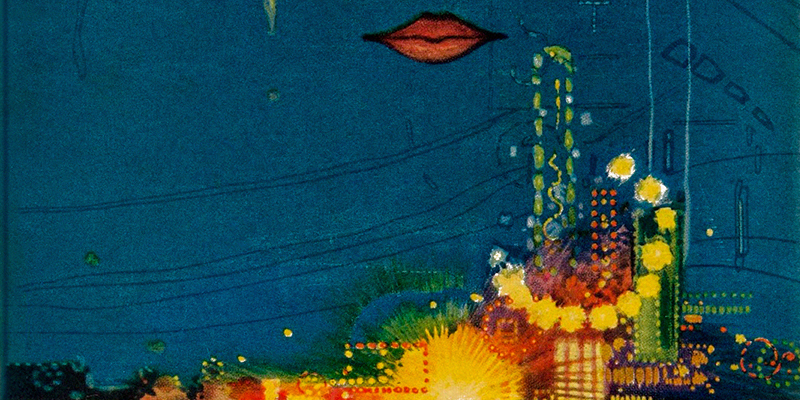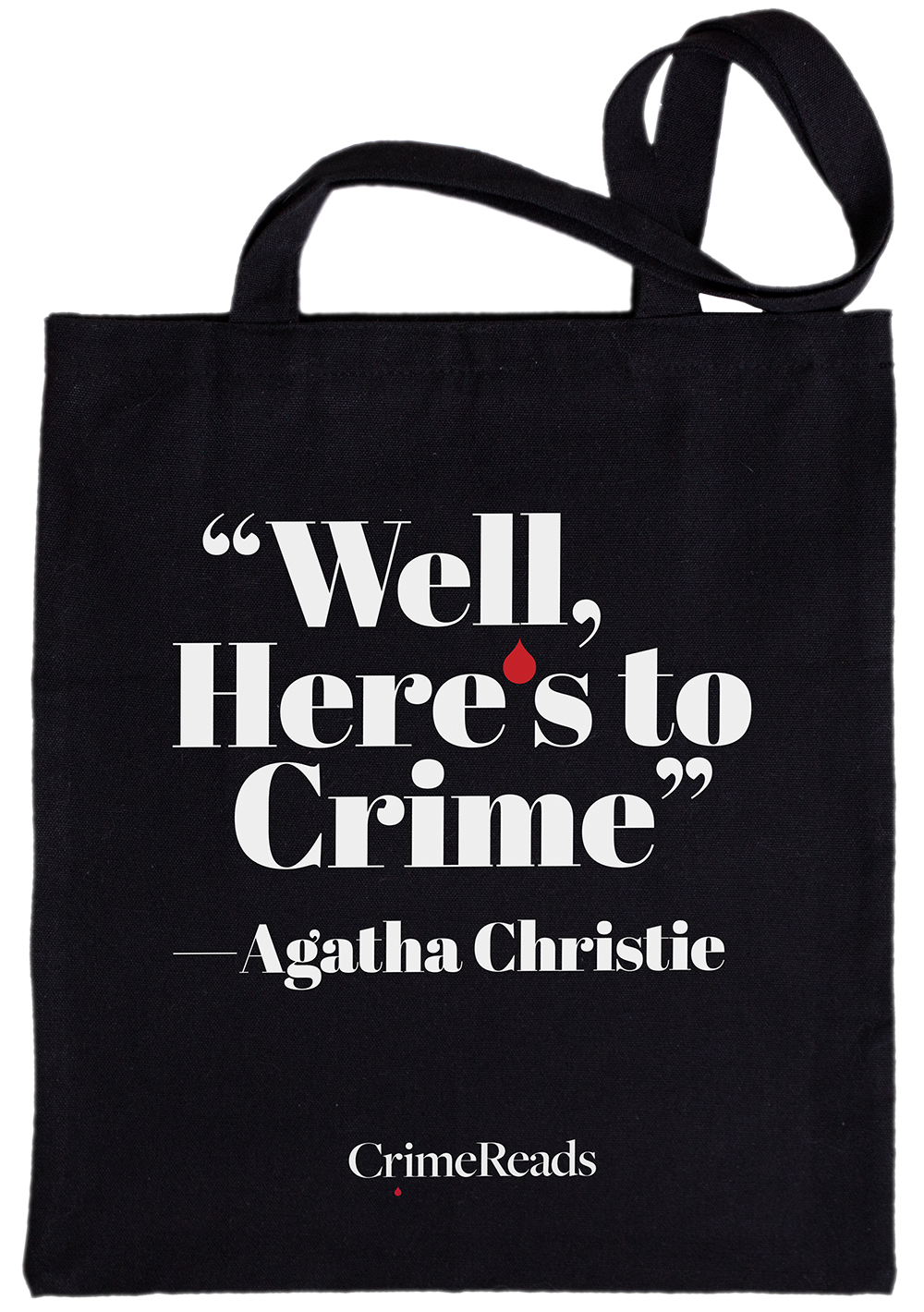## From Battlefield to Black Market: The Unseen Legacy of WWII’s Stolen Treasures
World War II, a conflict that reshaped the world, left a trail of devastation not only in bombed-out cities and shattered lives, but also in the hearts of museums and collectors worldwide. Behind the headlines of battles and political upheaval lies a darker story: the systematic looting and theft of artifacts, art, and cultural treasures.

Imagine priceless paintings snatched from crumbling Parisian galleries, ancient manuscripts disappearing from plundered libraries, and centuries-old religious icons vanishing into the shadows. This isn’t just a tale of wartime greed; it’s a story of cultural erasure, historical amnesia, and the enduring fight to reclaim a stolen legacy.

Thrift Store Surprises: Unexpected Discoveries and the Quest for Provenance

The hunt for looted art often takes unexpected turns, revealing hidden treasures in the most unlikely places. In recent years, several high-profile discoveries have emerged from thrift stores, highlighting the enduring legacy of World War II and the complex issue of provenance. These seemingly innocuous secondhand shops have become unlikely battlegrounds in the fight to recover stolen cultural heritage.
One remarkable case involved a 2,000-year-old Roman bust discovered in a Goodwill store in Texas for a mere $34.99. Experts later confirmed that the marble head, weighing 52 pounds, had been looted from Germany during the war, likely acquired by an American G.I. The dealer, recognizing its significance, returned the bust to Germany for an undisclosed finder’s fee, demonstrating the crucial role of ethical awareness and due diligence in the art market.
Another instance occurred in a Queens Habitat for Humanity thrift store, where a man purchased a drawing for under $80. The artwork, later identified as an original by renowned Austrian artist Egon Schiele, was estimated to be worth $200,000. This case underscores the inherent challenge of tracing the origins of artwork, as there is often no definitive proof of legitimacy or theft.
These thrift store discoveries raise critical questions about the chain of custody for artwork, particularly objects acquired during wartime. Who is responsible for verifying provenance, and how can we ensure that stolen artifacts are not unknowingly traded and passed down through generations?

The Art of Repatriation: From the Meador Family’s Sale to International Legal Battles
The repatriation of looted art is a complex and often contentious process, involving legal battles, ethical considerations, and the delicate balance of national interests.
One notable case involved the Meador family, whose patriarch, U.S. Army Lieutenant Joe T. Meador, looted priceless church artifacts from Quedlinburg, Germany, during the war. After his death, the family sold some of the stolen goods to a German art repatriation organization for $3 million in 1990. While criminal charges against the family were dismissed due to the statute of limitations, an IRS suit for $50 million ended in a settlement for a paltry $135,000 in 2000. The case highlights the challenges of prosecuting war crimes decades after they occurred and the difficulties of determining rightful ownership.
International legal battles over looted art have become increasingly common in recent years. Countries are actively pursuing the return of stolen artifacts, often with the support of international organizations such as UNESCO. For example, France has been actively campaigning for the repatriation of African artifacts acquired during the colonial era, while Germany has made significant efforts to reclaim artworks looted from Jewish families during the Holocaust.
These legal battles raise profound questions about the ethics of cultural ownership and the responsibilities of museums and private collectors. Should looted art be returned to its country of origin, regardless of its current location or ownership? What are the legal frameworks for addressing these claims, and how can we ensure that stolen objects are not simply traded between institutions?
Bruno Lohse: A Case Study in Unpunished Crimes and the Lingering Shadow of Looted Art
The story of Bruno Lohse, a notorious Nazi art thief, exemplifies the enduring challenges of recovering looted art and holding perpetrators accountable. Lohse, whose activities were documented in the PBS documentary “Plunderer: The Life and Times of a Nazi Art Thief,” was acquitted by a military tribunal in Paris in 1950 despite his undeniable role in the plunder of priceless artworks.
Lohse’s case highlights the complexities of prosecuting war crimes, particularly when they involve cultural objects rather than human life. He went on to operate as an art dealer in post-war Munich, even attempting to reclaim artworks that had been confiscated from him. Upon his death, a secret bank vault containing paintings of indeterminate provenance from renowned artists such as Renoir, Monet, and Camille Pissarro was discovered, further solidifying his legacy as a shadowy figure in the art world.
Lohse’s case raises several important questions: Why was he acquitted despite ample evidence of his crimes? What mechanisms are in place to prevent individuals like Lohse from profiting from stolen art? How can we ensure that the victims of Nazi looting receive justice, even decades after the war?
The Ethical Dilemma: Possession, Value, and the Weight of History
The issue of looted art presents a multifaceted ethical dilemma, encompassing questions of ownership, restitution, and the weight of historical context.
Beyond Monetary Worth: The Intrinsic Value of Cultural Heritage and its Impact on National Identity
Looting cultural objects transcends mere financial loss; it represents a profound assault on a nation’s heritage and identity. These artifacts are not simply commodities; they are tangible links to a shared history, embodying the collective memory and cultural values of a people. The theft of such objects erases a part of a nation’s story, leaving a void that cannot be easily filled.
For example, the loss of ancient artifacts from Egypt’s museums has been deeply felt by the Egyptian people, who view these objects as integral to their national identity. The return of these artifacts is seen as a vital step in reclaiming their cultural heritage and restoring a sense of wholeness.
The Burden of Knowledge: The Moral Responsibility of Collectors and the Complexities of Ownership
Collectors, particularly those who acquire artworks from dubious sources, bear a moral responsibility to investigate provenance and ensure that the objects they own were not obtained through illegal means. The phrase “buyer beware” applies with particular force in the art market, where the line between legitimate acquisition and illicit trafficking can be blurred.
Individuals who purchase looted art may unknowingly contribute to a system that perpetuates injustice. They have a duty to exercise due diligence, seek expert opinions, and ensure that their acquisitions align with ethical principles. The rise of online databases and authentication services can play a crucial role in empowering collectors to make informed decisions.
Finding Justice: The Ongoing Efforts to Recover Looted Art and the Quest for Closure
The pursuit of justice for victims of looted art is an ongoing process that requires international cooperation, legal expertise, and a commitment to ethical principles. While some looted objects have been successfully repatriated, many remain hidden in private collections or lost forever.
Organizations such as the International Council of Museums (ICOM) and UNESCO are actively working to establish international standards for provenance research and restitution. Governments are increasingly enacting legislation to criminalize the trade in looted cultural property and enhance enforcement efforts.
Conclusion
The Unyielding Pursuit of Justice: Confronting the Legacy of World War II’s Stolen and Looted Objects
As we conclude our investigation into the World War II’s plundered treasures, it becomes increasingly clear that the story of stolen and looted objects is one of immense complexity, far-reaching impact, and ongoing consequences. The article has taken readers on a journey through the intricacies of the Nazi confiscation of art, the Allied powers’ respective approaches to restitution, and the continued struggles faced by claimants seeking justice. We have seen how the once-mysterious world of looted art has been slowly unveiled, shedding light on the intricate networks of thieves, forgers, and middlemen who profited from the pillage of Europe’s cultural heritage.
The significance of this narrative extends far beyond the realm of art history, however. It is a grim reminder of the devastating consequences of war and the darker aspects of human nature. The looting and plundering of cultural treasures during World War II serves as a powerful symbol of the societal breakdown and moral decay that can occur when the rules of civilization are ignored. Furthermore, the ongoing struggles of claimants and the efforts of governments and institutions to address these crimes highlight the pressing need for accountability, transparency, and cooperation in the pursuit of justice. As we move forward, it is essential that we learn from the past, acknowledging the extent of the damage inflicted and working towards a more equitable and just future.
The legacy of World War II’s stolen and looted objects serves as a poignant warning, reminding us that the consequences of our actions can be felt for generations to come. It is a stark reminder that the pursuit of justice is never truly complete, that there are always more stories to be uncovered, more treasures to be returned, and more victims to be acknowledged. As we close this chapter, we are left with a haunting question: what will be the ultimate cost of our collective failure to confront the dark chapters of history? The answer, much like the fate of these looted treasures, remains uncertain – but one thing is clear: the search for justice will continue, fueled by the indomitable human spirit and the unyielding demand for accountability.